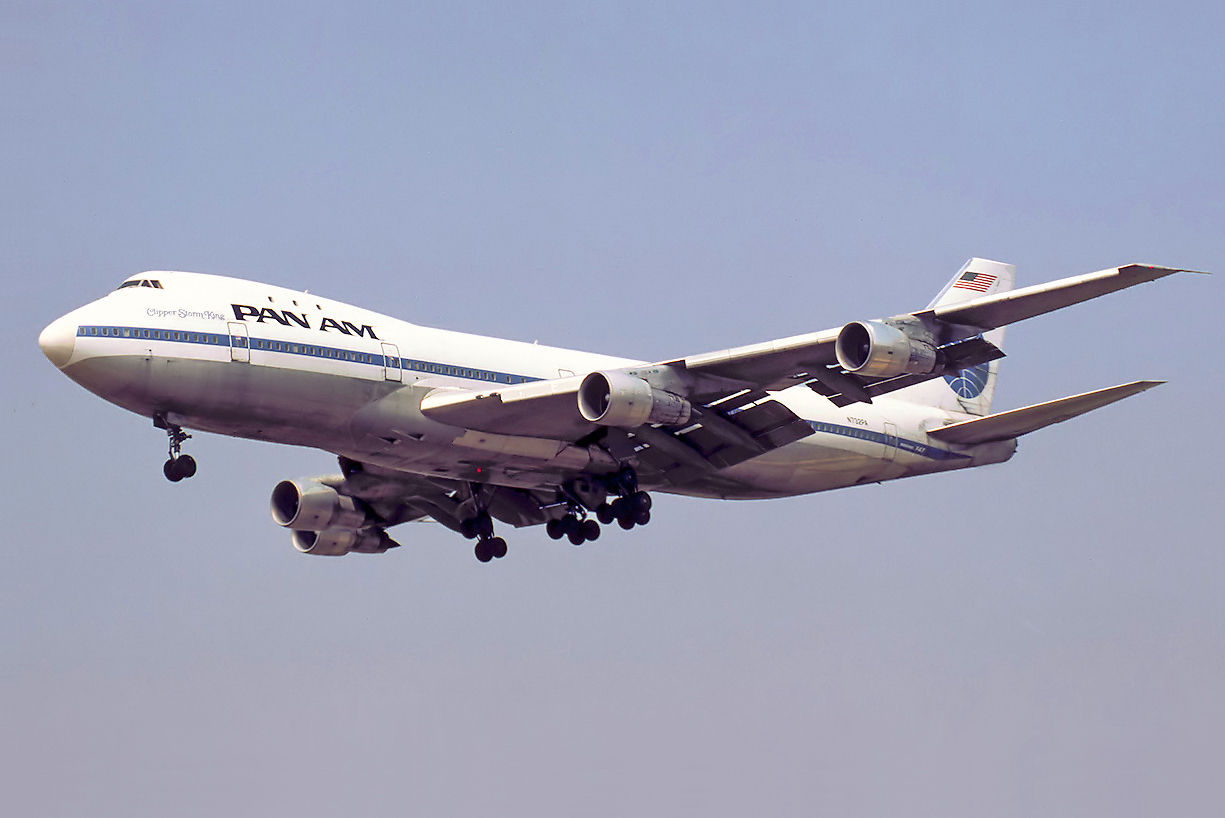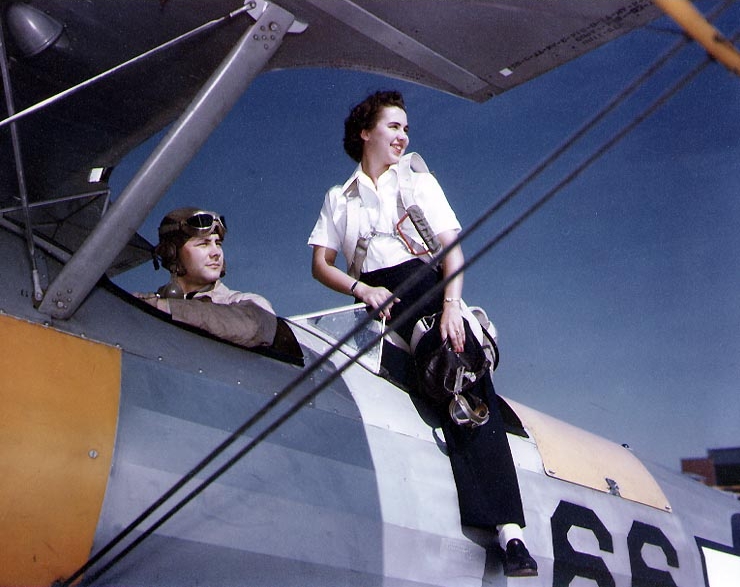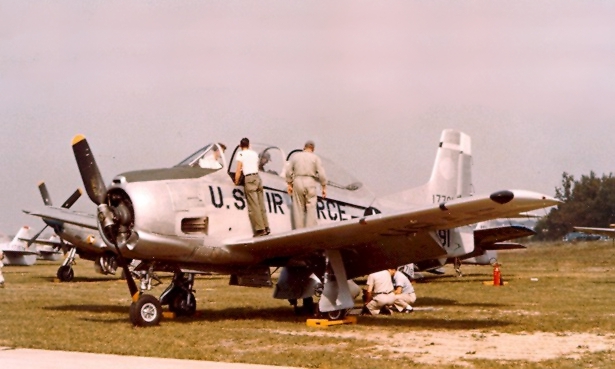|
Bolivian Air Force Museum
The Bolivian Air Force Museum is an aviation museum located at El Alto International Airport in El Alto, La Paz. History In 1958, Amalia Villa de la Tapia began acquiring artifacts related to the history of aviation in Bolivia and these formed the genesis of the Bolivian Air Force's Historical Collection. The historian Ramiro Molina Alanes took over her role as curator of the collection in 1985. Starting in 2001 it was housed in the air force headquarters. However, the museum was moved to a new location at El Alto International Airport in 2015. Collection * Aérospatiale Alouette III * Aerotec A-122 Uirapuru, Aerotec T-23 Uirapuru * BAe 146-200 * Beechcraft T-34 Mentor, Beechcraft VT-34A Mentor * Bell UH-1H Iroquois * Cessna 152 * Cessna 206, Cessna U206G Stationair * Convair 580 * Douglas C-47 Dakota * Fokker F27-400M Troopship * Aérospatiale SA 315B Lama, Helibras HB 315B Gaviao * IAI Arava, IAI 201 Arava * Lancair 360 * Lockheed C-130A Hercules * Lockheed L-188A Electra ... [...More Info...] [...Related Items...] OR: [Wikipedia] [Google] [Baidu] |
El Alto, La Paz
El Alto (Spanish for "The Heights") is the second-largest city in Bolivia, located adjacent to La Paz in Pedro Domingo Murillo Province on the Altiplano highlands. El Alto is today one of Bolivia's fastest-growing urban centers, with an estimated population of 943,558 in 2020. It is also the highest major city in the world, with an average elevation of . The El Alto–La Paz metropolitan area, formed by La Paz, El Alto, Achocalla, Viacha, and Mecapaca, constitutes the most populous urban area of Bolivia, with a population of about 2.2 million. History The dry and inclement plain above La Paz was uninhabited until 1903 when the newly built railways from Lake Titicaca and Arica reached the rim of the canyon, where the La Paz terminus, railyards and depots were built along with a settlement of railway workers (a spur line down into the canyon opened in 1905). In 1925, the airfield was built as a base for the new air force, which attracted additional settlement. In 1939, El Alto's ... [...More Info...] [...Related Items...] OR: [Wikipedia] [Google] [Baidu] |
Lancair 360
The Lancair 360 is a two-seat aircraft marketed in kit form. It is a low-wing monoplane of conventional configuration with retractable tricycle undercarriage. The Lancair Legacy was chosen to replace the Lancair 360 in 1999. Variants *Lancair 360TC - Carbon Fiber Turbocharged Specifications (Lancair 360) References {{Lancair aircraft 360 360 may refer to: * 360 (number) * 360 AD, a year * 360 BC, a year * 360 degrees, a circle Businesses and organizations * 360 Architecture, an American architectural design firm * Ngong Ping 360, a tourism project in Lantau Island, Hong Kong * ... 2000s United States civil utility aircraft Homebuilt aircraft Single-engined tractor aircraft Low-wing aircraft ... [...More Info...] [...Related Items...] OR: [Wikipedia] [Google] [Baidu] |
Museums In Bolivia
A museum ( ; plural museums or, rarely, musea) is a building or institution that cares for and displays a collection of artifacts and other objects of artistic, cultural, historical, or scientific importance. Many public museums make these items available for public viewing through exhibits that may be permanent or temporary. The largest museums are located in major cities throughout the world, while thousands of local museums exist in smaller cities, towns, and rural areas. Museums have varying aims, ranging from the conservation and documentation of their collection, serving researchers and specialists, to catering to the general public. The goal of serving researchers is not only scientific, but intended to serve the general public. There are many types of museums, including art museums, natural history museums, science museums, war museums, and children's museums. According to the International Council of Museums (ICOM), there are more than 55,000 museums in 202 countrie ... [...More Info...] [...Related Items...] OR: [Wikipedia] [Google] [Baidu] |
Aviation In Bolivia
Aviation includes the activities surrounding mechanical flight and the aircraft industry. ''Aircraft'' includes fixed-wing and rotary-wing types, morphable wings, wing-less lifting bodies, as well as lighter-than-air craft such as hot air balloons and airships. Aviation began in the 18th century with the development of the hot air balloon, an apparatus capable of atmospheric displacement through buoyancy. Some of the most significant advancements in aviation technology came with the controlled gliding flying of Otto Lilienthal in 1896; then a large step in significance came with the construction of the first powered airplane by the Wright brothers in the early 1900s. Since that time, aviation has been technologically revolutionized by the introduction of the jet which permitted a major form of transport throughout the world. Etymology The word ''aviation'' was coined by the French writer and former naval officer Gabriel La Landelle in 1863. He derived the term fro ... [...More Info...] [...Related Items...] OR: [Wikipedia] [Google] [Baidu] |
Air Force Museums
The atmosphere of Earth is the layer of gases, known collectively as air, retained by Gravity of Earth, Earth's gravity that surrounds the planet and forms its planetary atmosphere. The atmosphere of Earth protects life on Earth by creating Atmospheric pressure, pressure allowing for Water#Liquid water, liquid water to exist on the Earth's Planetary surface, surface, absorbing ultraviolet Solar irradiance, solar radiation, warming the surface through heat retention (greenhouse effect), and reducing temperature extremes between Daytime, day and night (the diurnal temperature variation). By mole fraction (i.e., by number of molecules), dry air contains 78.08% nitrogen, 20.95% oxygen, 0.93% argon, 0.04% Carbon dioxide in Earth's atmosphere, carbon dioxide, and small amounts of other gases. Air also contains a variable amount of Water vapor#Water vapor in Earth's atmosphere, water vapor, on average around 1% at sea level, and 0.4% over the entire atmosphere. Air composition, tempera ... [...More Info...] [...Related Items...] OR: [Wikipedia] [Google] [Baidu] |
List Of Aerospace Museums
This is a list of aviation museums and museums that contain significant aerospace-related exhibits throughout the world. The aviation museums are listed alphabetically by country and their article name. Afghanistan * OMAR Mine Museum, Kabul - includes a large collection of Soviet aircraft Argentina * , Bahía Blanca * Museo Nacional de Aeronáutica de Argentina, Morón Armenia * Civil Aviation Museum, Zvartnots Australia Australian Capital Territory * Australian War Memorial, Canberra New South Wales * Australian Aviation Museum, Bankstown * Camden Museum of Aviation, Camden * Luskintyre Aviation Flying Museum, Hunter Region * Temora Aviation Museum, Temora * Fighter World Museum, RAAF Williamtown * Narromine Aviation Museum, Narromine * Historical Aircraft Restoration Society, Illawarra Regional Airport, Albion Park Rail * Fleet Air Arm Museum, Nowra * Powerhouse Museum, Sydney * RAAF Wagga Heritage Centre, Wagga Wagga Northern Territory * Central Australian Av ... [...More Info...] [...Related Items...] OR: [Wikipedia] [Google] [Baidu] |
Stearman PT-17 Kaydet
The Stearman (Boeing) Model 75 is a biplane formerly used as a military trainer aircraft, of which at least 10,626 were built in the United States during the 1930s and 1940s. Stearman Aircraft became a subsidiary of Boeing in 1934. Widely known as the Stearman, Boeing Stearman, or Kaydet, it served as a primary trainer for the United States Army Air Forces, the United States Navy (as the NS and N2S), and with the Royal Canadian Air Force as the Kaydet throughout World War II. After the conflict was over, thousands of surplus aircraft were sold on the civilian market. In the immediate postwar years, they became popular as crop dusters and sports planes, and for aerobatic and wing walking use in air shows. Design and development The Kaydet was a conventional biplane of rugged construction, with a large, fixed tailwheel undercarriage, and accommodation for the student and instructor in open cockpits in tandem. The radial engine was usually not cowled, although s ... [...More Info...] [...Related Items...] OR: [Wikipedia] [Google] [Baidu] |
Aero Commander 500 Family
The Aero Commander 500 family is a series of light-twin piston-engined and turboprop aircraft originally built by the Aero Design and Engineering Company in the late 1940s, renamed the Aero Commander company in 1950, and a division of Rockwell International from 1965. The initial production version was the 200-mph, seven-seat Aero Commander 520. An improved version, the 500S, manufactured after 1967, is known as the Shrike Commander. Larger variants are known by numerous model names and designations, ranging up to the 330-mph, 11-seat Model 695B/Jetprop 1000B turboprop. Design and development The idea for the Commander light business twin was conceived by Ted Smith, a project engineer at the Douglas Aircraft Company. Working part-time after hours throughout 1944, a group of A-20 engineers formed the Aero Design and Engineering Company to design and build the proposed aircraft with a layout similar to their A-20 bomber. Originally, the new company was going to build thre ... [...More Info...] [...Related Items...] OR: [Wikipedia] [Google] [Baidu] |
Pilatus PC-7
The Pilatus PC-7 Turbo Trainer is a low-wing tandem-seat training aircraft designed and manufactured by Pilatus Aircraft of Switzerland. The aircraft is capable of all basic training functions including aerobatics, instrument, tactical and night flying. The PC-7 was developed from the preceding Pilatus P-3, largely differing by the adoption of a turboprop engine, a bubble canopy, and a new one-piece wing. Introduced during the 1970s, it has since developed a sizable presence of the global trainer market. The type has been adopted by in excess of 20 air forces as their ab initio trainer, as well as multiple civilian operators. Over one million hours have reportedly been flown by PC-7s worldwide. In addition to training operations, some aircraft are armed and have been used for combat missions by several customers, including Chad, Iran, and Mexico, often in violation of the relevant export agreement between the customer and the Swiss government. An improved model of the aircra ... [...More Info...] [...Related Items...] OR: [Wikipedia] [Google] [Baidu] |
North American T-28A Trojan
The North American Aviation T-28 Trojan is a radial-engine military trainer aircraft manufactured by North American Aviation and used by the United States Air Force and United States Navy beginning in the 1950s. Besides its use as a trainer, the T-28 was successfully employed as a counter-insurgency aircraft, primarily during the Vietnam War. It has continued in civilian use as an aerobatics and warbird performer. Design and development On September 24, 1949, the XT-28 (company designation NA-159) was flown for the first time, designed to replace the T-6 Texan. The T-28A arrived at the Air Proving Ground, Eglin Air Force Base, Florida, in mid-June 1950, for suitability tests as an advanced trainer by the 3200th Fighter Test Squadron, with consideration given to its transition, instrument, and gunnery capabilities. Found satisfactory, a contract was issued and between 1950 and 1957, a total of 1,948 were built. Following the T-28's withdrawal from U.S. military service, a numb ... [...More Info...] [...Related Items...] OR: [Wikipedia] [Google] [Baidu] |
North American T-6D Texan
The North American Aviation T-6 Texan is an American single-engined advanced trainer aircraft used to train pilots of the United States Army Air Forces (USAAF), United States Navy, Royal Air Force, Royal Canadian Air Force and other air forces of the British Commonwealth during World War II and into the 1970s. Designed by North American Aviation, the T-6 is known by a variety of designations depending on the model and operating air force. The United States Army Air Corps (USAAC) and USAAF designated it as the AT-6, the United States Navy the SNJ, and British Commonwealth air forces the Harvard, the name by which it is best known outside the US. Starting in 1948, the new United States Air Force (USAF) designated it the T-6, with the USN following in 1962. It remains a popular warbird used for airshow demonstrations and static displays. It has also been used many times to simulate various historical aircraft, including the Japanese Mitsubishi A6M Zero. A total of 15,495 T-6s of a ... [...More Info...] [...Related Items...] OR: [Wikipedia] [Google] [Baidu] |
Neiva T-25 Universal
The Neiva N621 Universal is a Brazilian propeller-driven basic trainer and ground attack aircraft manufactured by Indústria Aeronáutica Neiva. It is a cantilever, low-wing monoplane of all-metal construction, with retractable undercarriage and side-by-side seating. Design and development The Universal was designed in 1963 as a new primary trainer for the Brazilian Air Force, as a replacement for the T-6 Texan and Fokker S-11/S-12 types then in use. The prototype (Registration PP-ZTW) first flew on 29 April 1966. The Brazilian Air Force ordered 150 aircraft as the T-25 Universal, and increased this order in 1978 by an additional 28 aircraft. A further developed version (designated the YT-25B Universal II) first flew on 22 October 1978 but was not put into production. The Universal was also adopted as a counter-insurgency aircraft. It was later replaced by the Tucano in both the advanced training and attack roles, but it is still used as a primary and basic trainer at the A ... [...More Info...] [...Related Items...] OR: [Wikipedia] [Google] [Baidu] |




.jpg)




.jpg)
.jpg)